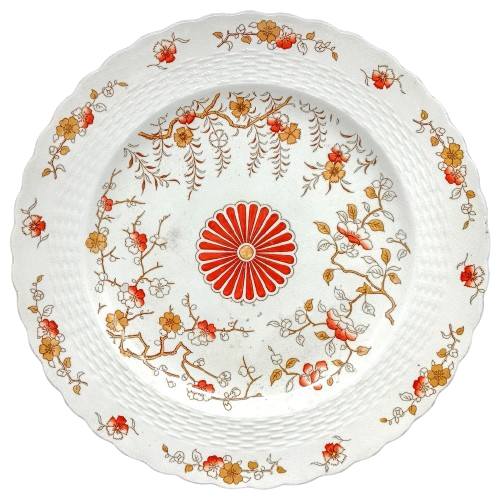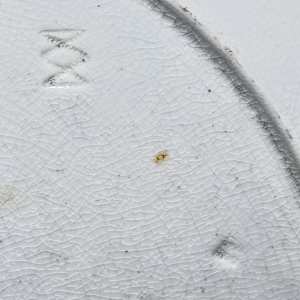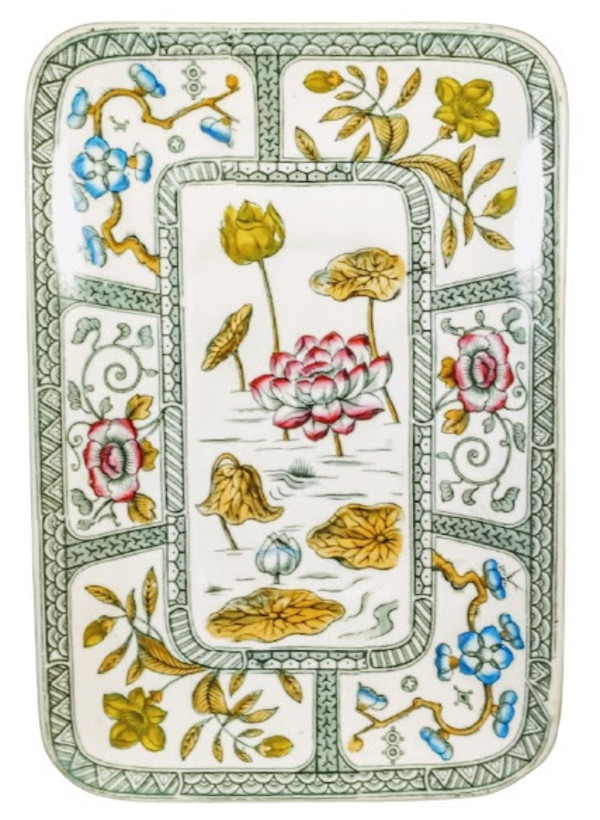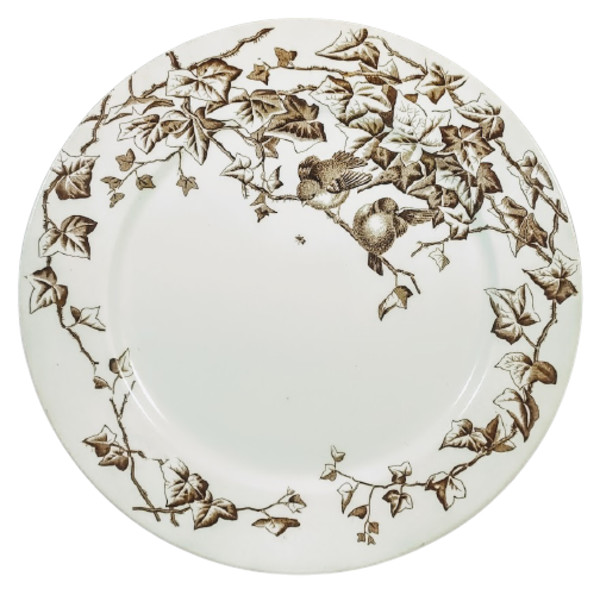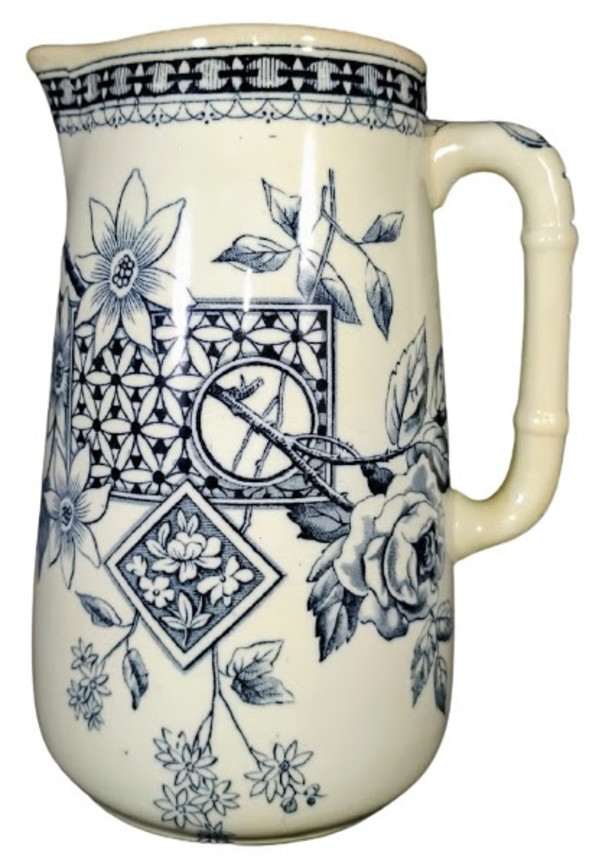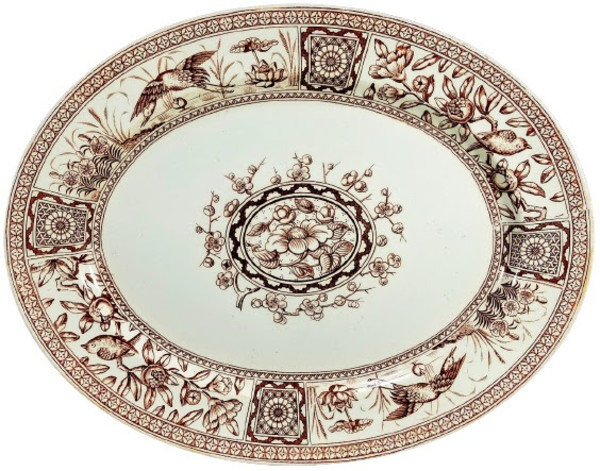Plate, 10.25 inches diameter. Brown transfer with polychrome clobbering. Printed and impressed maker's marks for Mintons. The impressed symbol indicates a manufacture date of 1885. Red painted painted number C3170/3. The pattern name "Jaffa" is most likely a reference to the ancient Levantine port city of Jaffa, which is now part of Tel Aviv, Israel. The pattern features the Japanese chrysanthemum (kiku) in the center of the well, surrounded by branches of dianthus, prunus, and peonies. The well is bordered by a band of molded basketweave and an outer band of alternating dianthus and prunus sprigs.
Thomas Minton started the business in 1793 and since then there were many partners and company names. In 1849 Colin Minton Campbell joined Herbert Minton (his uncle and the son of Thomas Minton) and Michael Daintry Hollins and the business traded as Minton & Co. In 1849 Herbert Minton engaged a young French ceramic artist, Léon Arnoux, as art director and he remained with the Minton Company until 1892. This and other enterprising appointments enabled the company to widen its product ranges, one of the first innovations being the very colorful and highly successful majolica ware launched at The Great Exhibition of 1851. Colin Minton Campbell and Michael Daintry Hollins were also in partnership with Robert Minton Taylor as tile manufacturers trading as Minton, Hollins & Co. When Herbert Minton died in 1858 Colin Minton Campbell took over direction of the firm. The partnership with Hollins was dissolved in 1863, Colin Minton Campbell taking the china works and Hollins the tile works. From 1879 the business traded as 'Mintons.'
- Subject Matter: Aesthetic (Floral & Botanical)
- Collections: Aesthetic Transferware, Minton(s)
